|
|
||||||
|
|
|
|||||
| (Muller 1764) | (Muller 1764) | (Muller 1764) |
| Odonta - Anisoptera | Odonta - Anisoptera | Odonta - Anisoptera |
| Southern Hawker - Aeshna cyanea | Southern Hawker - Aeshna cyanea | Southern Hawker - Aeshna cyanea |
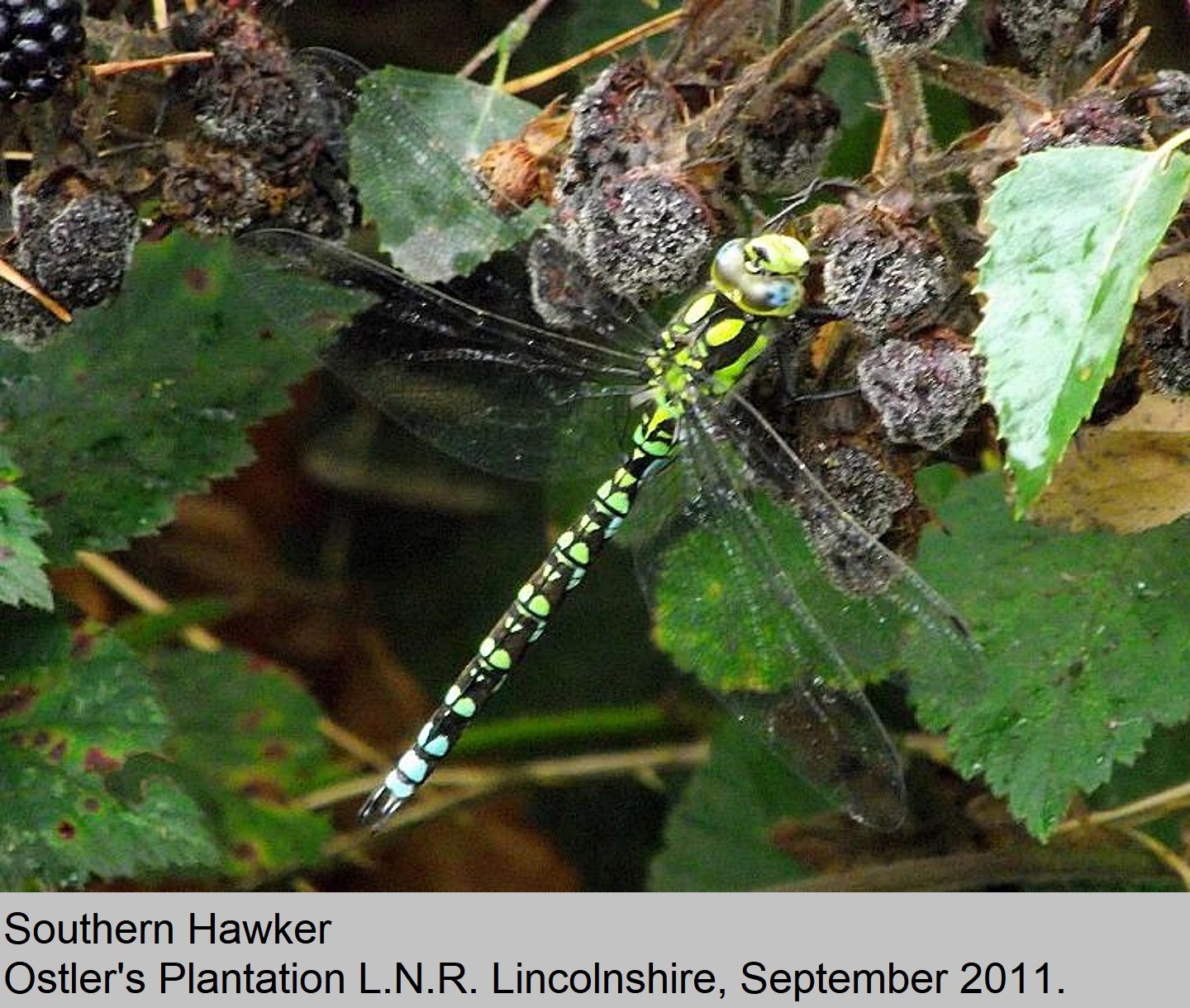 |
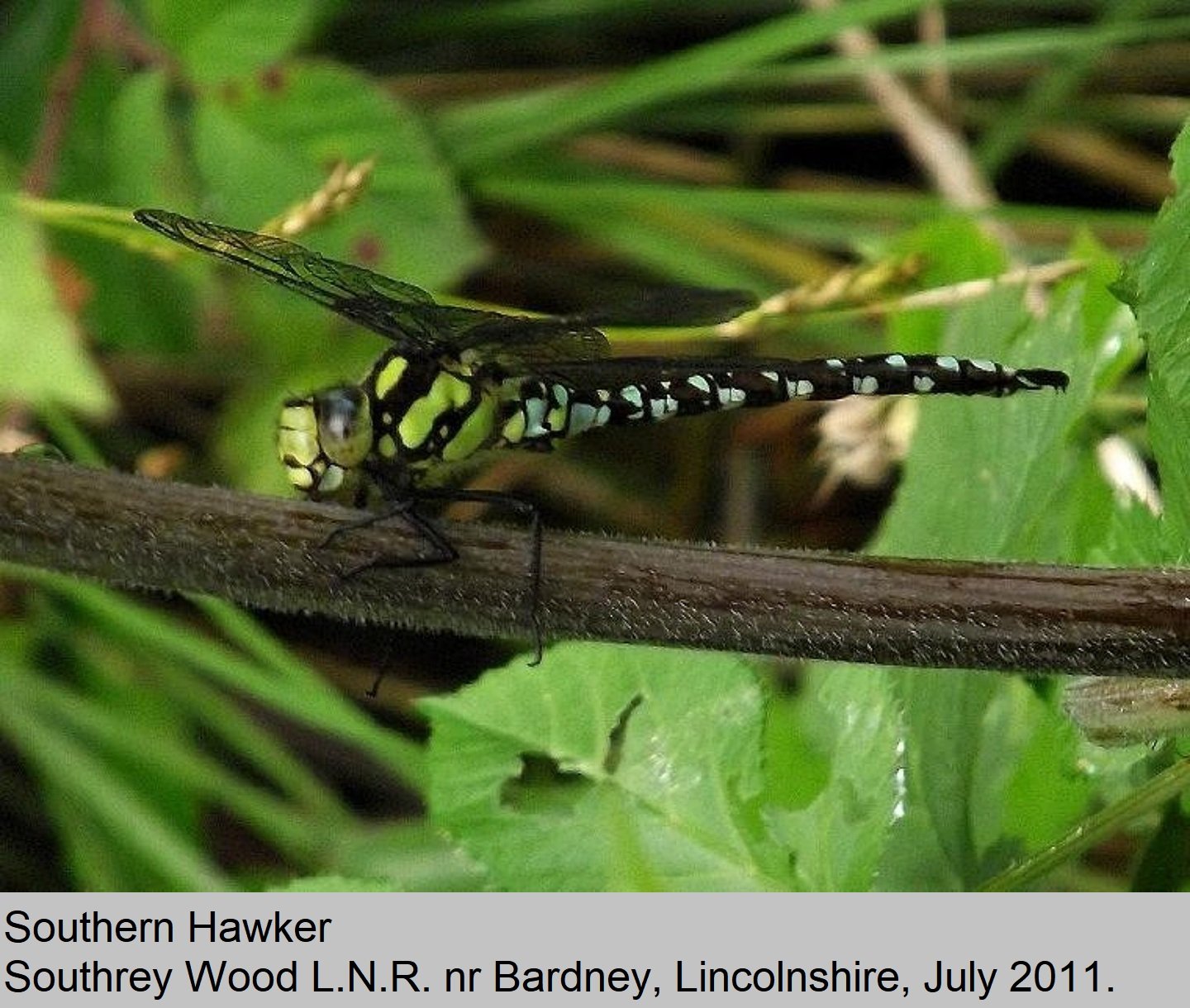 |
|
| (Muller 1764) | (Muller 1764) | (Muller 1764) |
| Odonta - Anisoptera | Odonta - Anisoptera | Odonta - Anisoptera |
| Southern Hawker - Aeshna cyanea | Southern Hawker - Aeshna cyanea | Southern Hawker - Aeshna cyanea |
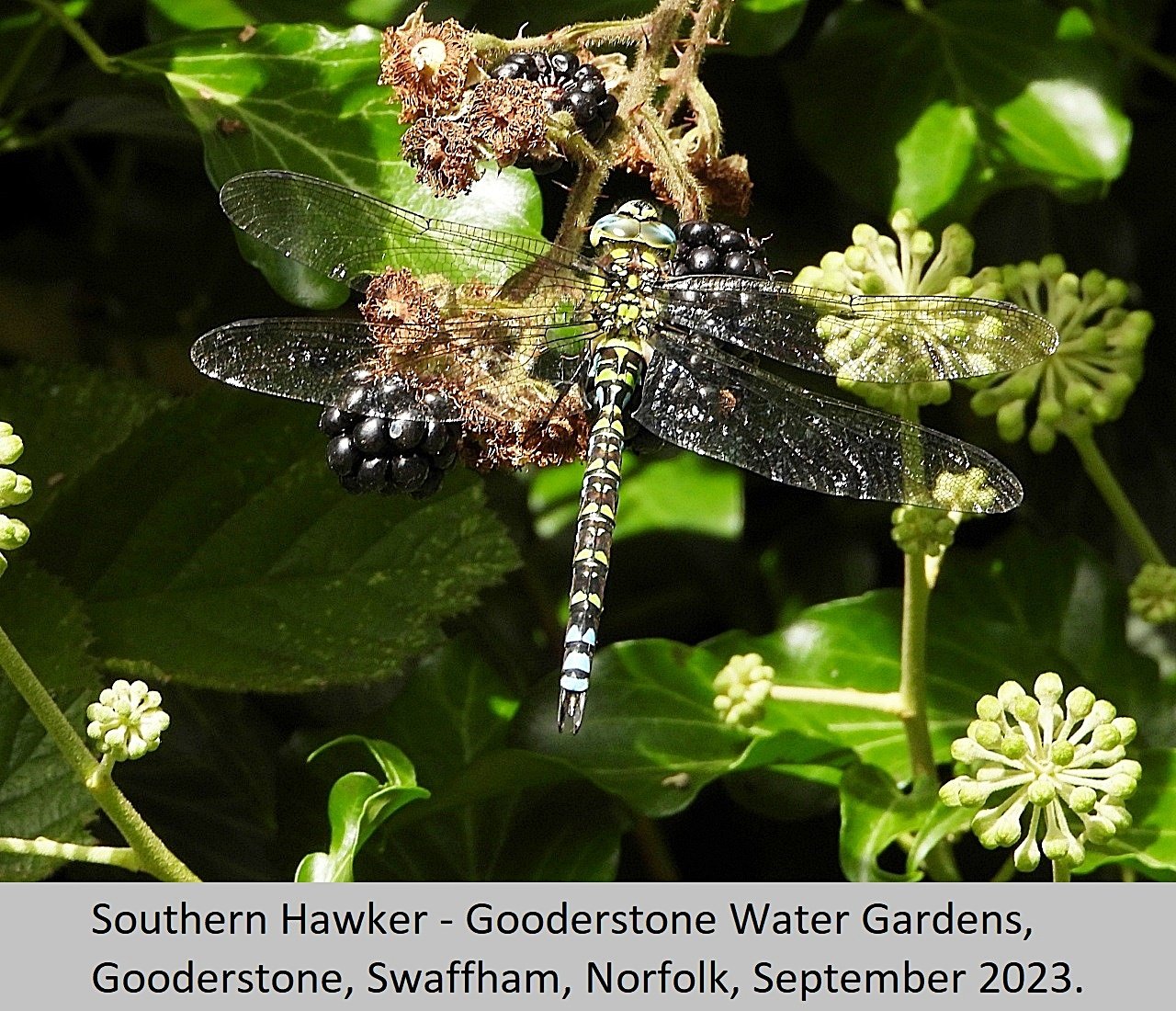 |
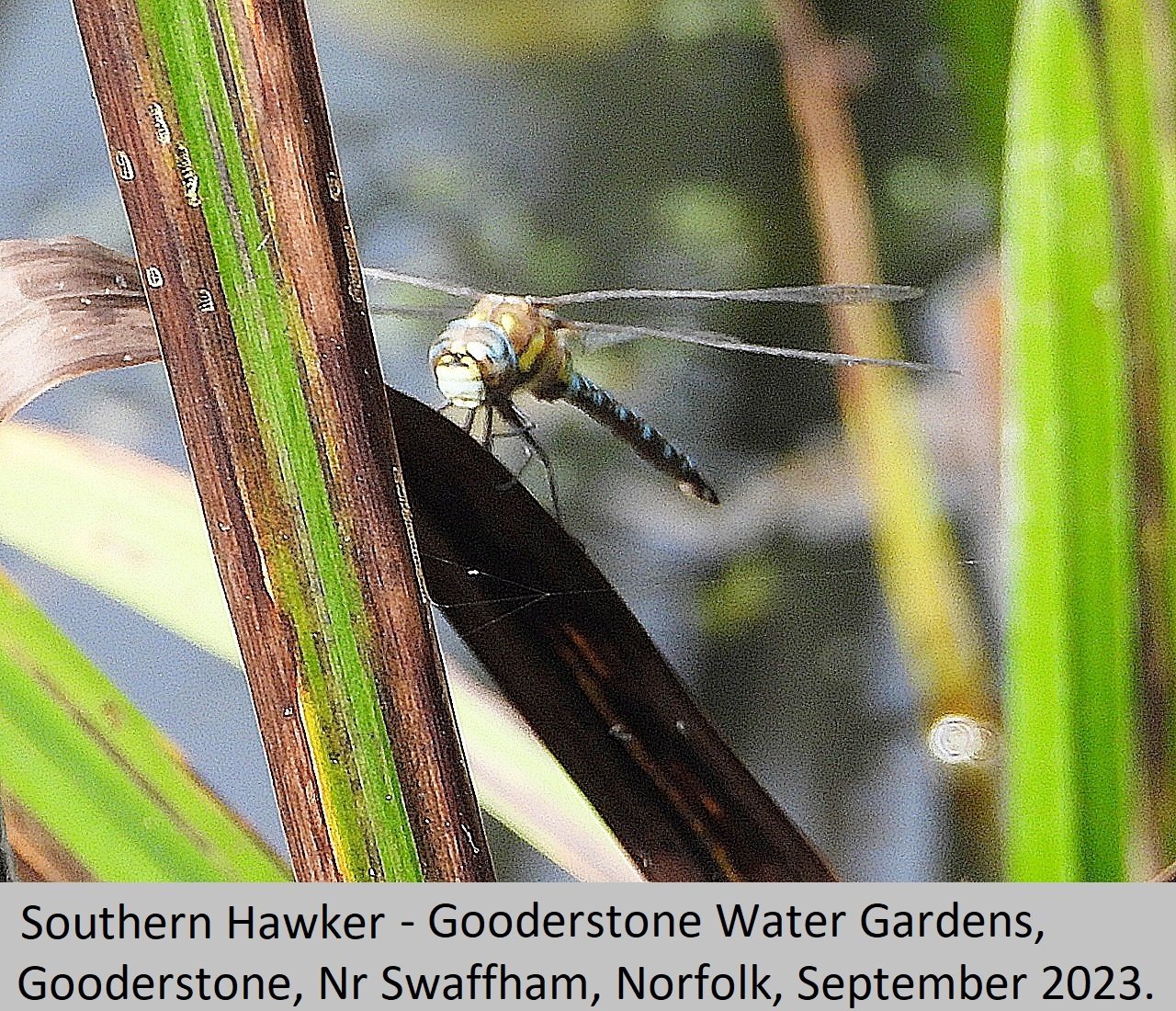 |
UK Status: Resident and migrant. Distribution: It is fairly common throughout most of England and Wales. Scarce in northern England, and localised in Scotland. Length: 60mm to 72mm Wing Span: 90mm to 110mm- Habitat: None acidic bodies of water seem to be preferred. This species also prefers well vegetated small pools and ponds, including garden ponds. It hunts for prey long distances from water, and can be seen in woodland rides untill quite late into the evening. Flight Period: In favourable seasons it can appear in late May, but more usually it is on the wing from June through to October. Larval Period: From an egg this species emerges as a mature dragonfly in two to three years. Food Source: Most small insects, as with other dragonfly species. Similar Species: Several Hawkers are of a similar appearance, care needs to be taken when identifying them. |
| (Latreille 1805) | (Latreille 1805) | (Latreille 1805) |
| Odonta - Anisoptera | Odonta - Anisoptera | Odonta - Anisoptera |
| Migrant Hawker - Aeshna mixta | Migrant Hawker - Aeshna mixta | Migrant Hawker - Aeshna mixta |
 |
UK Status: Resident and Migrant. Distribution: This species is fairly common throughout most parts of England and Wales. This species is scarcer in Northern England and Scotland. Length: 60mm to 68mm Wing Span: 75mm to 82mm Habitat: Migrant Hawkers seem to prefer standing water, including ditches and dykes. Flight Period: About late May through until November. Larval Period: The larval life is completed within a year. Food Source: Most small insects, as with other dragonfly species. Similar Species: Several Hawkers are of a similar appearance, care needs to be taken when identifying them.
|
|
| (Muller 1764) | (Muller 1764) | |
| Odonta - Anisoptera | Odonta - Anisoptera | |
| Hairy Dragonfly - Brachytron pratense | Hairy Dragonfly - Brachytron pratense | |
 |
UK Status: Resident Distribution: This species is steadily increasing it's range. Although it's stronghold was central and southeast England, it is found in Norfolk and other parts of England, and also Scotland. Body Length: 52mm to 57mm Wing Span: 65mm to 72mm Habitat: Unpolluted, and very well vegetated bodies of water, including lakes, canals and rivers. Flight Period: From around early to mid May, through to about the middle to the end of July. Larval Period: From an egg the nymph takes two years to emerge as an adult dragonfly. Food Source: Most small insects, which are often caught in mid air. Similar Species: The Migrant Hawker is quite similar, but comes on the wing later in the year. However beware there is an overlap between the two species, with them both on the wing together. |
|
| (Latreille 1805) | (Leach 1815) | (Leach 1815) |
| Odonta - Anisoptera | Odonta - Anisoptera | Odonta - Anisoptera |
| Migrant Hawker - Aeshna mixta | The Emperor - Anax imperator | The Emperor - Anax imperator |
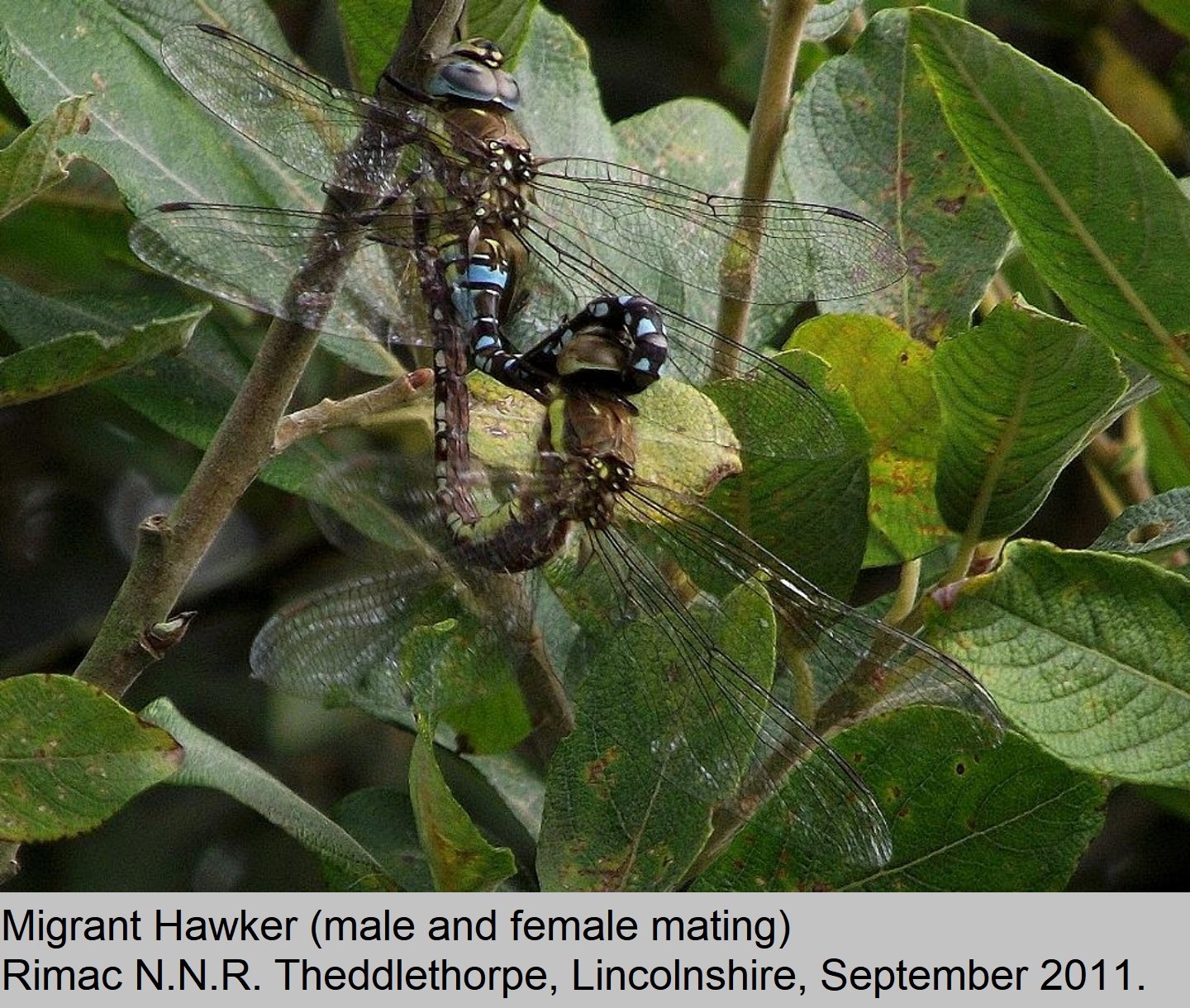 |
 |
UK Status: Resident. Distribution: This dragonfly can be found right across Wales, and most of England. In recent years it is to be seen around the southern and eastern shores of Scotland. Body Length: 74mm to 82mm Wing Span: 89mm to 102mm Habitat: Usually found at large well vegetated ponds and lakes. Sometimes they can be found around canals and slow flowing rivers. Flight Period: From about late April through to September. Larval Period: The eggs hatch the same year as they were laid, and emerge as adults a year later. Food Source: Most kinds of small insects, including butterflies and moths. Similar Species: There are blue and green colour forms of this species. Once close up identification should be straight forward.
|
|
Next Dragonflies Page 2 |
||
| Contact Website Manager dave.hatton29@btinternet.com | Web Designer Dave Hatton | Dave Hatton reserves the copyright on all images. © 2022 |